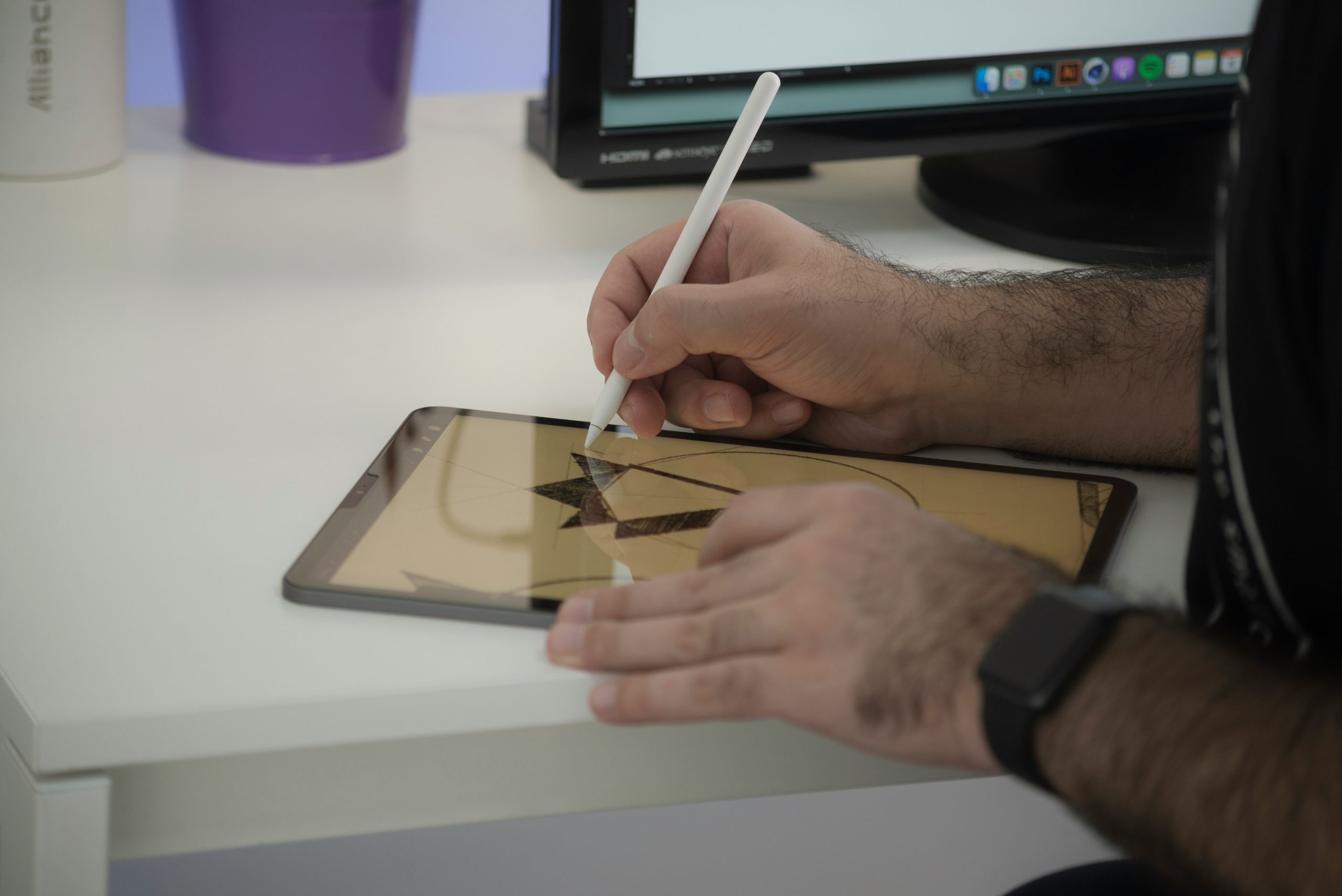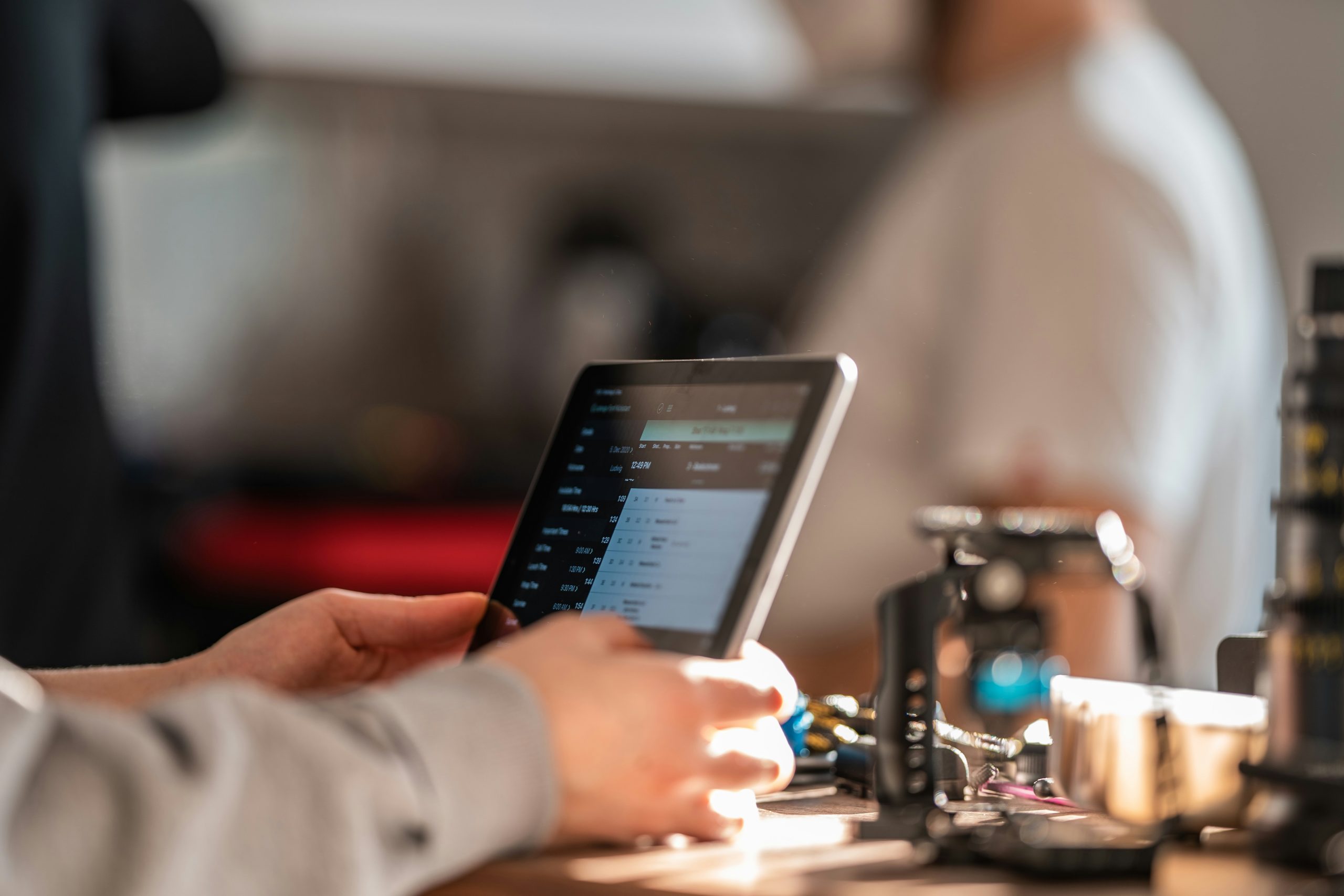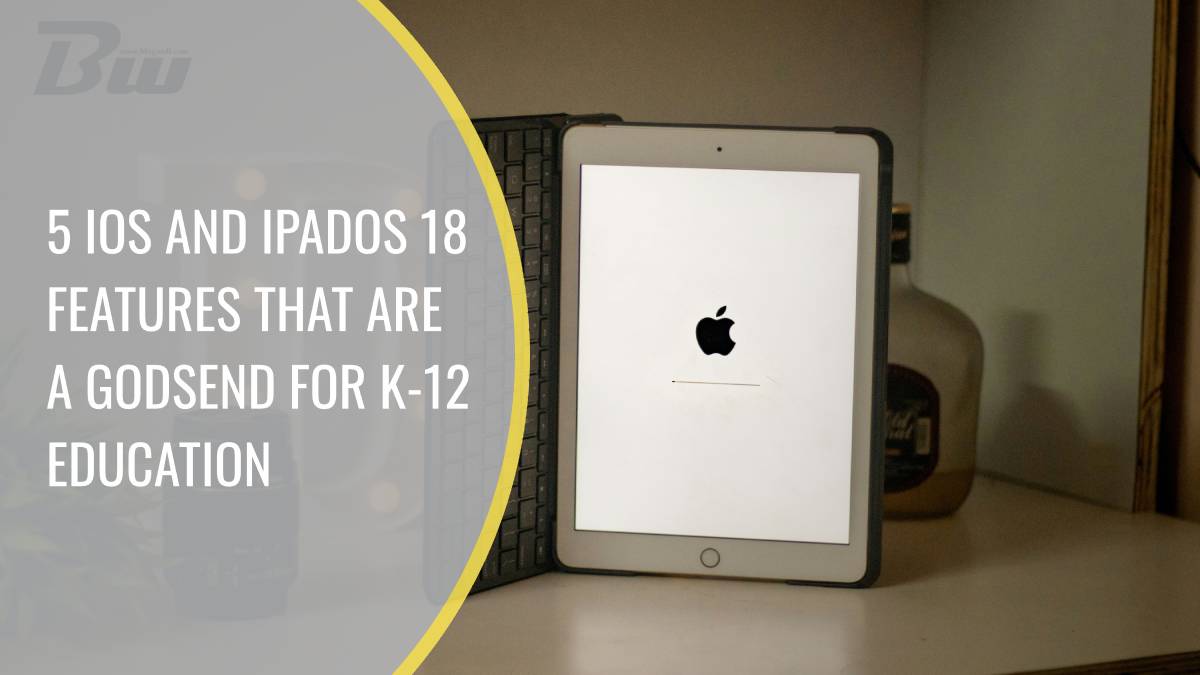Table of Contents
In a world where technology is reshaping the landscape of education, Apple’s latest iOS and iPadOS 18 updates have emerged as a beacon of innovation for K-12 classrooms. As students and teachers return to school, the need for tools that enhance learning experiences has never been more critical. Imagine an educational environment where personalized learning paths are seamlessly integrated into daily lessons, fostering engagement and understanding like never before. With features designed specifically to address the challenges educators face, these updates promise to transform how students interact with their digital devices.
Gone are the days of one-size-fits-all approaches to teaching; today’s learners require adaptable solutions that cater to diverse needs and learning styles. From enhanced collaboration tools that break down barriers between students and teachers to intuitive accessibility options ensuring every student can thrive, iOS and iPadOS 18 deliver on their promise of supporting an inclusive educational experience. Join us as we explore five standout features that not only elevate classroom dynamics but also empower educators in their quest for effective teaching in an increasingly digital world.
The Impact of iOS and iPadOS 18
One of the standout features of iOS and iPadOS 18 is its enhanced collaborative tools, specifically through updates to FaceTime and shared content capabilities. For educators in K-12 settings, these tools transform how group projects and discussions take place. Imagine a classroom where students can seamlessly connect with peers in different schools or states via video calls while simultaneously sharing screens or documents. This not only fosters a sense of community but also breaks down geographical barriers, providing students with access to diverse perspectives—a vital component of modern education.
Furthermore, the introduction of improved accessibility features ensures that learning tools are more inclusive than ever. With advanced voice recognition and text-to-speech functionalities integrated into educational apps, students who may struggle with traditional reading methods can now engage more fully with the curriculum. This democratizes education by leveling the playing field for all learners, allowing those with varied needs to participate actively and confidently in their academic journeys.
Finally, privacy enhancements focus on protecting student data without sacrificing functionality. Schools rely heavily on technology for communication and learning management systems; thus, Apple’s commitment to robust security measures instills confidence among educators and parents alike. By prioritizing privacy while still encouraging digital exploration, iOS and iPadOS 18 create an environment that promotes safe learning experiences rooted in trust—essential for nurturing young minds in today’s tech-driven world.

Enhanced Classroom Collaboration Tools
Enhanced classroom collaboration tools in iOS and iPadOS 18 are transforming the educational landscape, making learning a collective experience. With features that support real-time brainstorming and project management, students can seamlessly share ideas, resources, and feedback right from their devices. The integration of interactive whiteboards allows multiple users to annotate together during lessons or group projects, fostering deeper engagement and understanding as they visually map out concepts side by side.
Additionally, with improved communication platforms embedded within dedicated apps, teachers can now create structured channels for discussions that extend beyond traditional classroom hours. This promotes an ongoing dialogue where students feel empowered to voice their thoughts or questions freely. In an era where remote learning has blurred traditional boundaries, these collaborative tools help maintain connections among peers and educators alike, ensuring that no student feels isolated in their learning journey. By nurturing a spirit of teamwork and shared responsibility for knowledge creation, these advancements are setting new standards for collaborative education in K-12 environments.
Improved Accessibility Features for All Learners
One of the standout features in iOS and iPadOS 18 is the enhanced accessibility options designed to foster an inclusive educational environment. By integrating tools like Live Speech and Personal Voice, Apple allows students with speech disabilities to communicate effortlessly, bridging gaps that often hinder classroom participation. This not only encourages self-expression but also fosters collaboration, as peers can engage more effectively with their classmates who may have previously faced barriers in vocal interaction.
Moreover, educators can leverage the new Smart Text Selection feature that intelligently identifies and highlights relevant content across various apps. With this capability, students can swiftly locate information they need for research or assignments without wading through piles of texts. Coupled with improvements in VoiceOver technology allowing users to navigate seamlessly through complex documents, these tools are revolutionizing how learners interact with digital content. Ultimately, these advancements empower all students — regardless of their abilities — to thrive academically by eliminating obstacles that once made learning daunting.

Streamlined App Management for Educators
With the introduction of iOS and iPadOS 18, educators can now experience a transformative shift in app management that promises to enhance productivity and streamline classroom dynamics. One standout feature is the revamped App Library, offering intuitive organization based on subject matter and educational purpose. This means teachers can effortlessly access their tools without sifting through endless screens. The ability to categorize apps such as assessment tools, collaborative platforms, or multimedia resources not only saves time but also fosters a more focused teaching approach, allowing educators to concentrate on engaging students rather than navigating technology.
Additionally, the new Focus Filters enable educators to customize their device usage during specific teaching moments or when preparing lessons after hours. By filtering notifications and minimizing distractions from unrelated apps, teachers can curate an environment tailored for productivity—balancing their professional responsibilities with personal time seamlessly. This thoughtful integration encourages deep work sessions where creativity flourishes undisturbed while providing students with a well-rounded tech experience that mirrors their teacher’s commitment to attentiveness and engagement. Together, these features not only simplify app management but also symbolize an essential shift toward creating harmonious learning environments in the digital age.
Advanced Note-Taking Capabilities in School
The advanced note-taking capabilities in iOS and iPadOS 18 have transformed how students document their learning experience, tapping into a range of features that enhance retention and understanding. With the new contextual highlighting tool, learners can easily annotate lecture notes by color-coding key concepts, making complex information more digestible at a glance. This integration of visual cues helps students remember essential details, boosting their confidence during tests and presentations.
Additionally, the ability to seamlessly embed multimedia directly within note-taking apps allows for an enriched educational experience. Imagine a history student who jots down crucial dates while embedding relevant video clips or images—they’re not just taking notes; they’re creating an interactive study guide tailored to their learning style. This empowers educators to encourage creativity and critical thinking as students curate personalized content instead of relying solely on linear text formats. By harnessing these advanced capabilities, schools are paving the way for innovative teaching methods that transcend traditional barriers in K-12 education.
Interactive Learning with AR and VR Tools
Interactive learning through augmented reality (AR) and virtual reality (VR) tools is revolutionizing the educational landscape for K-12 students. These technologies create immersive experiences that move beyond traditional textbooks and screens, allowing students to engage with complex concepts in ways that resonate with their natural curiosity. Imagine a biology class where students can explore the human body in 3D, witnessing real-time functioning of organs while understanding their interrelations—this hands-on approach makes learning tangible and memorable.
Moreover, AR and VR foster collaboration among students, promoting teamwork as they tackle challenges together within these digital environments. Educators can leverage these tools to create simulations that mimic life-like scenarios; for instance, history lessons could transform into virtual time travel experiences where students walk through ancient civilizations or engage in pivotal events. This shift towards experiential education not only elevates student engagement but also cultivates critical thinking skills as learners must navigate and interact within these dynamic settings. With iOS and iPadOS 18 supporting such innovations seamlessly, educators have an unprecedented opportunity to harness creativity in classroom instruction like never before.

Customizable Focus Modes for Students
Customizable Focus Modes in iOS and iPadOS 18 empower students to create their ideal learning environments. By tailoring settings for different subjects or study sessions, students can minimize distractions more effectively than ever before. Imagine a student preparing for a math test, activating their Math Mode, which silences notifications from social media while allowing messages from study groups. This personalized approach not only promotes concentration but fosters autonomy in managing one’s time and attention.
Beyond mere distraction reduction, these Focus Modes encourage healthier study habits by incorporating scheduled breaks. With the ability to set specific periods for intense work alongside well-timed relaxation intervals, students can optimize productivity without sacrificing mental well-being. Teachers can even collaborate with students to refine these modes based on classroom needs, thereby creating a unified strategy that enhances both individual learning and group discussions—encouraging a culture of shared responsibility in maintaining focus during crucial educational moments.
Seamless Integration with Educational Apps
One of the standout features of iOS and iPadOS 18 is its seamless integration with educational apps, transforming the way students engage with digital learning environments. The deep synergy between Apple’s software and third-party educational tools allows for a smooth user experience that minimizes interruptions during lessons. For instance, enhanced APIs enable educators to easily incorporate apps like Flipgrid or Seesaw into their existing curricula—creating a blended learning atmosphere where collaboration thrives.
Moreover, this integration goes beyond mere compatibility; it fosters an ecosystem where personalized learning flourishes. With advancements in AI-driven insights, educators can leverage real-time data from these apps to tailor instructional strategies effectively. Imagine a scenario where your lesson plan adjusts on the fly based on student engagement levels reflected through an interactive app! Such dynamic adaptability not only keeps learners invested but also empowers teachers by providing them with actionable feedback right when they need it most. Through iOS and iPadOS 18’s robust support for educational applications, both students and educators are equipped to harness technology as a catalyst for deeper understanding and creativity.
Security Enhancements for Student Privacy
In a digital age where student data privacy is paramount, iOS and iPadOS 18 introduces robust security enhancements specifically designed to protect sensitive information. Features like improved end-to-end encryption for educational apps ensure that personal data remains safe from unauthorized access, giving parents and educators peace of mind. Furthermore, the streamlined permissions management allows students to understand how their data is used before they interact with various applications. This transparency fosters awareness among young users about their own privacy rights—an essential lesson in today’s tech-savvy world.
The integration of on-device learning algorithms also stands out as a game changer for K-12 education. By processing information locally rather than sending it to the cloud, these updates minimize exposure to potential data breaches while still allowing personalized learning experiences. For educators, this means they can adopt innovative teaching tools without compromising student safety. The emphasis on safeguarding student identities extends beyond individual apps; it creates an ecosystem that prioritizes informed consent and ethical use of technology—essential principles that will serve students well as they navigate future digital landscapes.
Conclusion: Embracing Technology in K-12 Education
Embracing technology in K-12 education isn’t just about keeping pace with the latest trends; it’s about fundamentally transforming how students learn and educators teach. The features introduced in iOS and iPadOS 18 empower teachers to create dynamic and interactive learning environments that cater to diverse learning styles. For instance, enhanced collaborative tools facilitate teamwork among students, fostering essential communication skills that are vital for future success. This isn’t merely a technological upgrade; it’s an avenue for nurturing critical thinking and problem-solving abilities through hands-on experiences.
Furthermore, the integration of AI-driven personalized learning experiences helps address individual student needs by adapting content in real-time based on performance metrics. This adaptability allows educators to intervene earlier and tailor educational strategies that resonate with each learner, bridging gaps that traditional methods may overlook. As schools increasingly become hubs of innovation rather than mere centres for rote education, embracing these advancements invites a culture of exploration and creativity among both students and teachers. Ultimately, harnessing the power of these technologies positions our classrooms at the helm of a brighter educational future—where curiosity is ignited, knowledge is shared dynamically, and every student can thrive.

